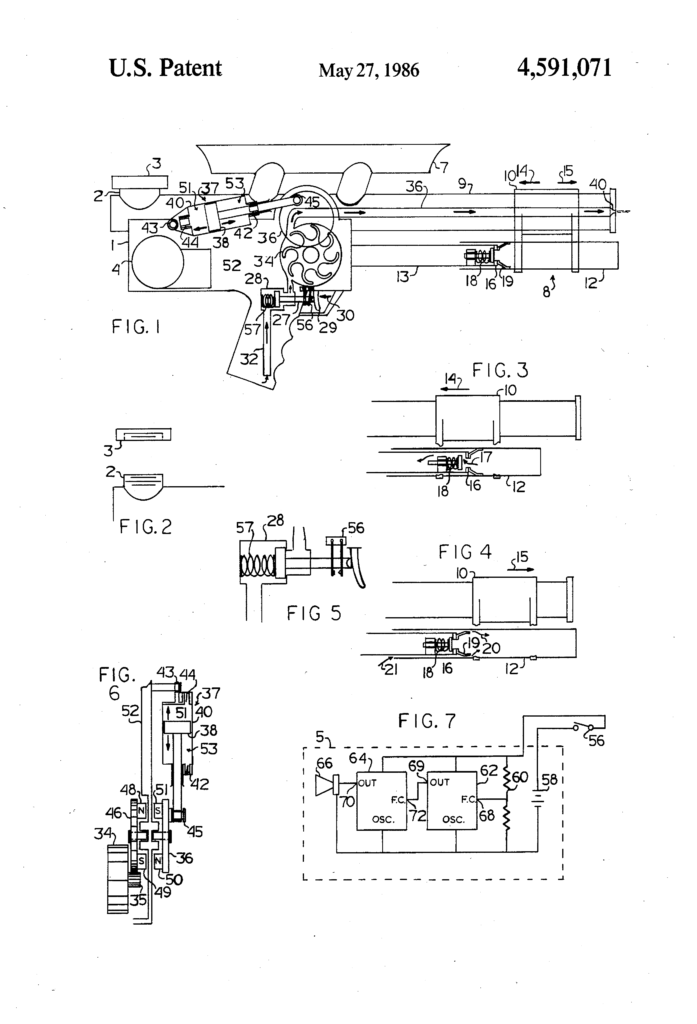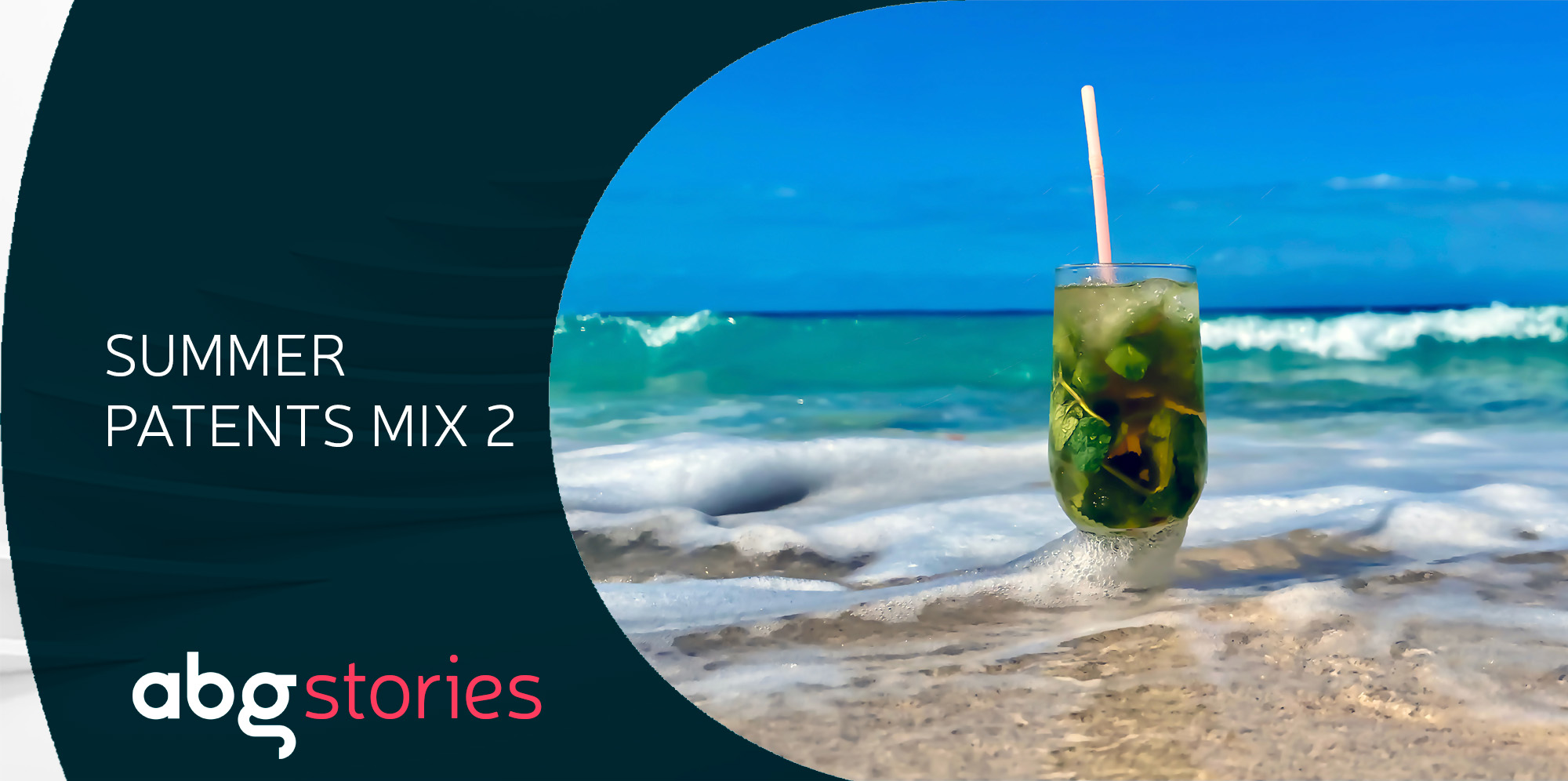Summer Patents Mix (Vol. 2)
Summer is back and, with it, the long-awaited Intellectual Break that every human being requires in order to regenerate body and mind. We take advantage of the high temperatures to offer you the second edition of the hottest ABGstories of the year.
A new mix of patents you can use to liven up your moments of relaxation and summer reading.
Outdoors
We start the summer miscellanea with body hydration. To do this, let us travel back to Memphis in 1912. There, a young and precocious Beulah L. Henry gave the world one of the first freezers in history.
The cylindrical container was made up of a refrigerating chamber that worked with little ice and, at the same time, served as a water cooler. Thanks to the invention (US 1037762), soaring temperatures became more bearable.
Barbecue
Just as important as good hydration is a good diet. Summer is not the best time to lock yourself in the kitchen. Ideally, we enjoy going outdoors where there’s fresh air and prepare a good barbecue
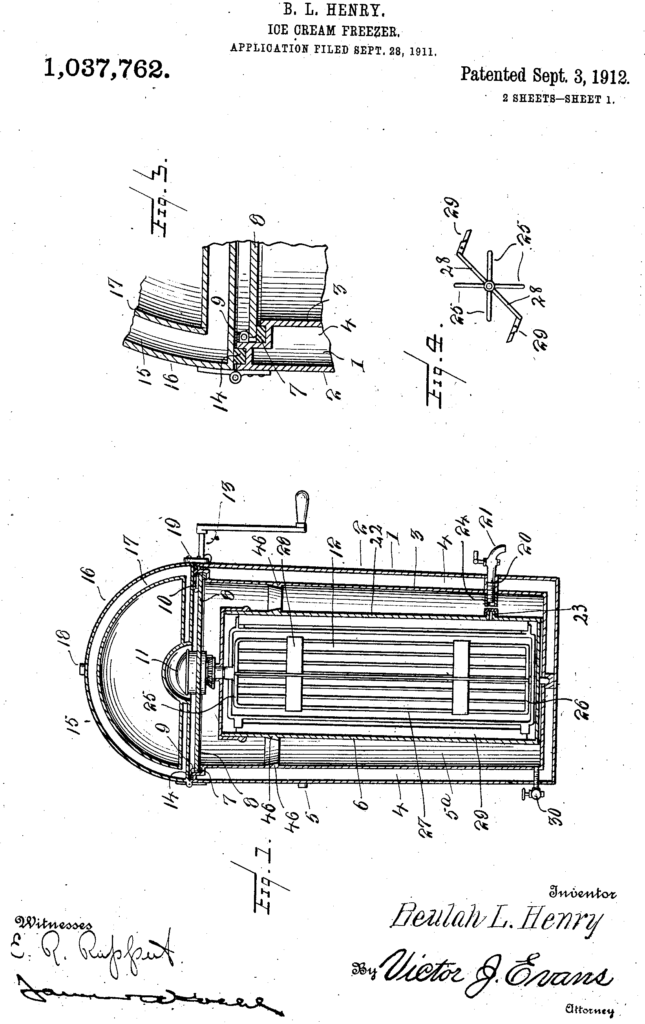
This cooking method, so in vogue today, is the legacy that was passed on by the Amerindian peoples of the Caribbean, such as the tainos. The lack of direct contact between food and fire caught the attention of Spanish, English and French settlers so much that they soon added it to their respective cuisines.
Before the “King of Summer” (aka Georgie Dann) put a soundtrack to it, the ecosystem of barbecue-related patents was already quite diverse. From the coal briquetting machine designed by Ellsworth and Rolland Zwoyer (US 1152468), with which the spark took off, to the modern version with a spherical casing, with grill and wheels, attributed to George Stephen. He obtained the patent in 1967 (US 3330266).
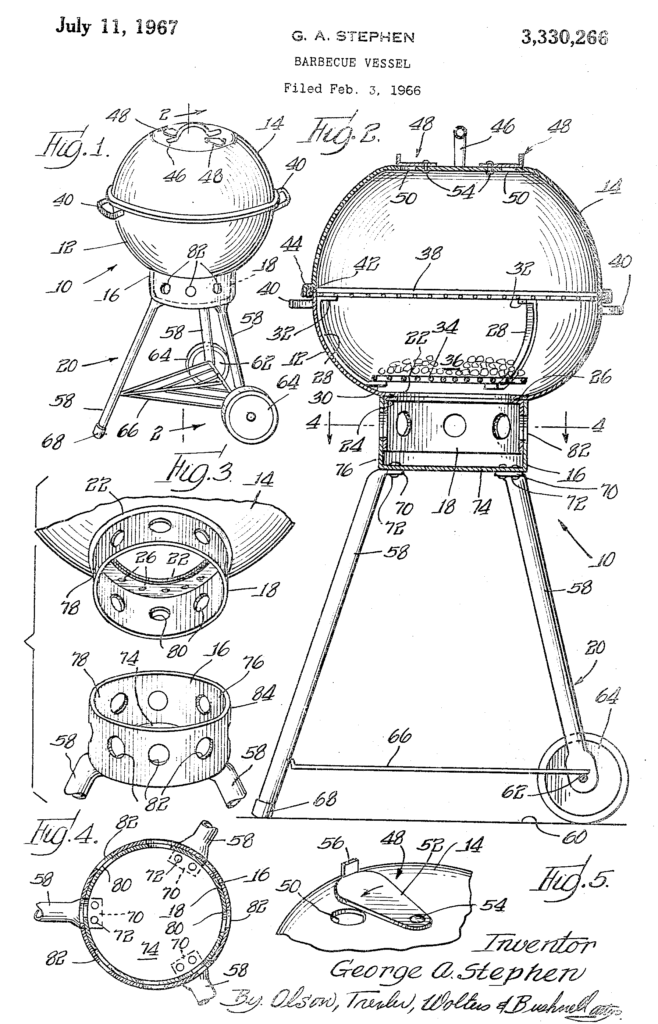
Afloat
Since the beginning of time, human beings have had to get along with water, an element as pleasant as it is dreaded. Faced with the need to stay afloat, whether for military or recreational purposes, everything from leather containers or well-sealed entrails to garments made of cork was in use.
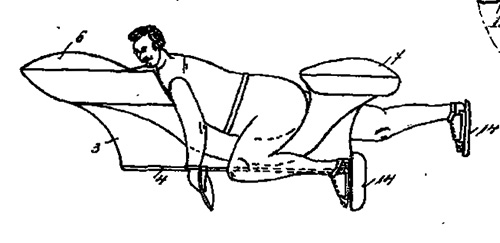
Current arm floaties and conventional floaters owe much to visionaries like the French inventor and mathematician, Jean-Baptiste de La Chapelle, who created the diving suit in 1775. His floating proposal for individual use influenced future proposals such as the life jacket that the American Alfred Gregory patented in 1867 (US 89402) or the unsinkable device that also French Joseph Boulligny patented in Spain in 1891 (ES 12756).
With the consolidation of beaches as a sightseeing destination at the beginning of the 20th century, swimming became the new favourite verb for all social classes. After seeing that humanity moved like a fish in water, inventors of all nationalities put their intellect at the service of the development of devices intended to improve swimming and safety on the water surface. This is how the floats revealed their sportier and more recreational side. Some were protected by patents as peculiar as the one on the device by German Philipp Lentz (GB 191017544).
Let us return to Beulah Henry to rescue the float that she patented in 1927. It was made up of several inflatable balls, a wooden seat and a cloth intended for resting the legs. If today it seems normal to navigate on inflatable mats and see ducks, unicorns and all kinds of fauna moving on pedals over the water, it is, in part, thanks to patents such as US 1639607 by this prolific woman inventor.
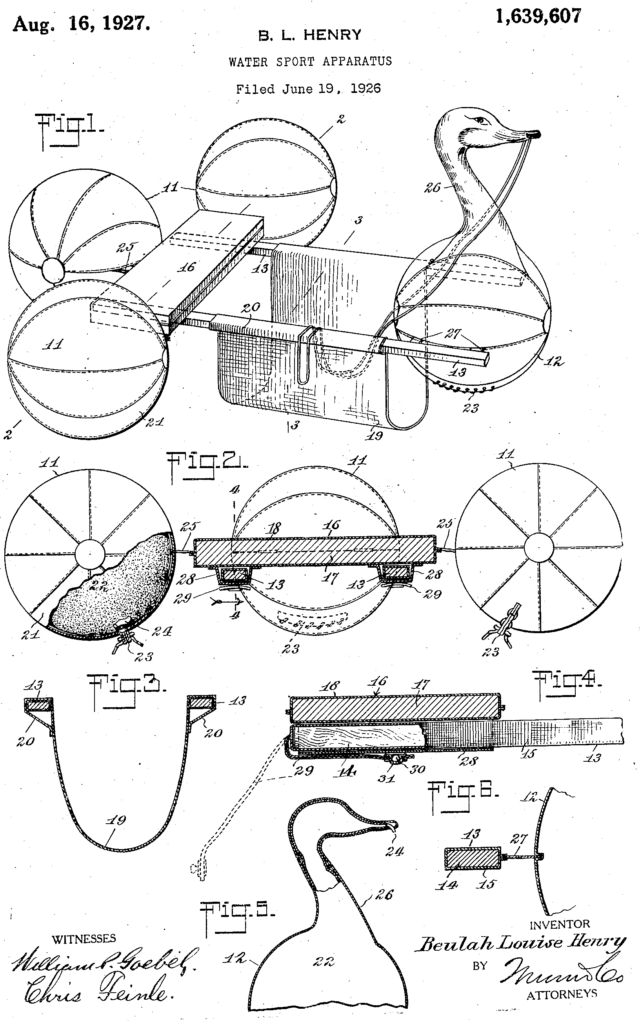
Safe across seas and mountains
Travel safety does not only apply to individual solutions. Talents such as those of Hervey Calkin or Mary Beasley cared for the well-being of group bookings with the improvement of classical lifeboat lines.
The former applied for a patent for his raft in 1871 (US 121275), while the second is considered as the mother of the modern life raft (a device that has been perfected since the 1880s) by creating a platform with railings and floats that was fireproof and the compact structure of which was easy to store (US 226264). A giant step compared to those that were made of wood from the mid-nineteenth century. Without such input, the Titanic tragedy would have left zero survivors.
A few seasons ago, we commented on the importance of protecting the skin from the sun in this section.
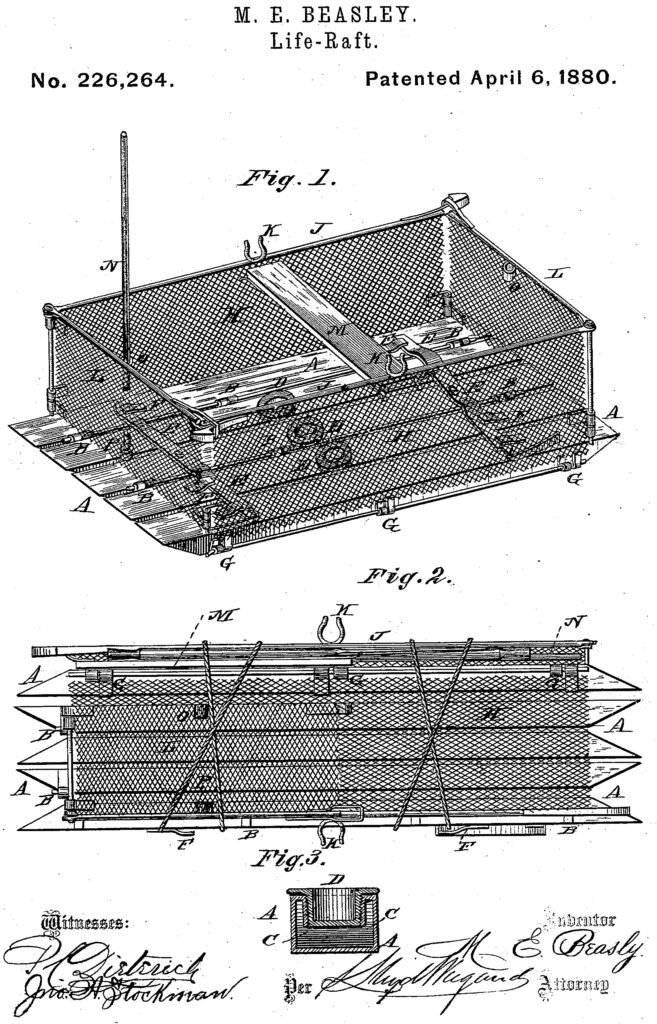
On this occasion, we go one step further to avoid serious scratches in high mountain destinations: the kevlar, a fabric as light as it is resistant to high temperatures and non-corrosive. Conceived for military use, it made the leap to mainstream to manufacture the clothes and tyres that risk lovers use in their rural getaways.
Bulletproof synthetic fibre was born in 1965. Its inventor is Stephanie Kwolek, whose patent (DE 1810426) was granted in 1971.
The American chemist defined her own finding as the result of chance. Synthetic fibre arose from the haphazard manipulation of carbon polymers. Due to an assignment of patent rights to the company she worked for, DuPont, Kwolek did not enjoy the huge economic gains generated by her discovery.
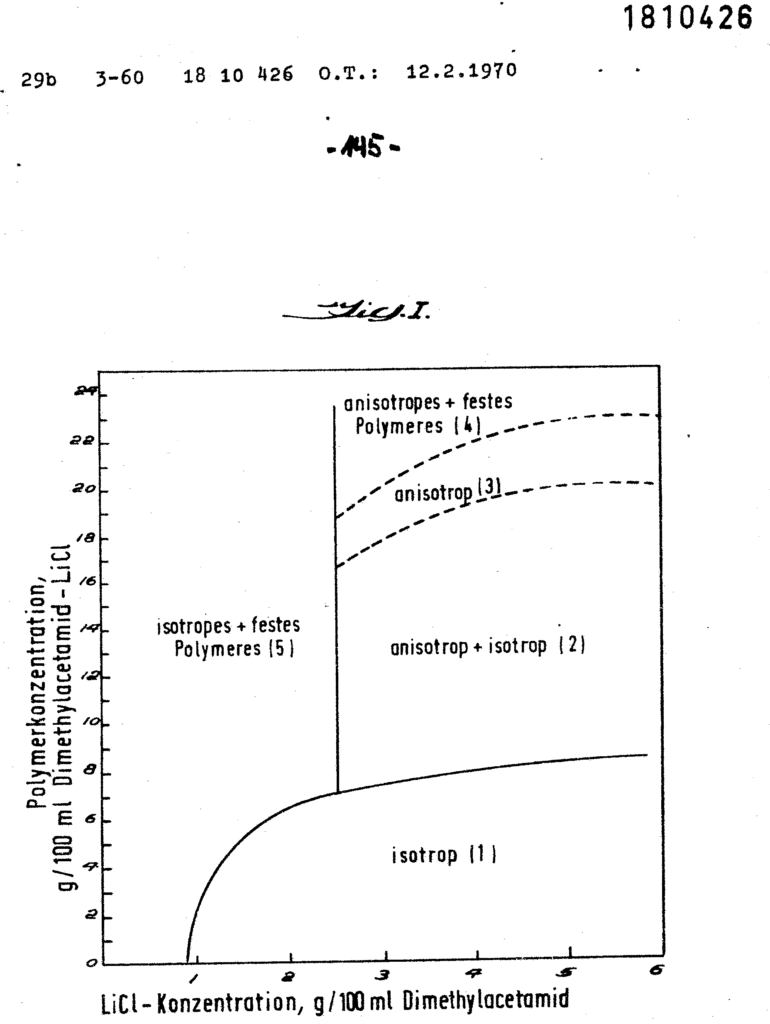
Professionally, she was granted more justice. She held the position of Head of Polymer Research at DuPont until her retirement and was awarded the United States National Medal of Technology and Innovation and the Perkin Medal (which is granted annually by the American section of the Society of the Chemical Industry).
Fighting the heat
At ABG IP, we are more about making love than war. Although, when it comes to fighting the heat during tropical days and nights, there’s nothing like having a good, well-loaded pistol filled with water at hand.
Humanity has been relieving summer hot flashes with this recreational mechanism since the 19th century. One of the earliest surviving patents is the one granted to J.W. Woof In 1896 (US 563114).
Since then, improvements have been added, although none as profitable as that of Lonnie G. Johnson. The African-American engineer devised his propelled water jet weapon in the spare time left by his work at NASA’s Jet Propulsion Laboratory.
In 1986 he was granted the patent (US 4591071) that would end up becoming the SuperSoaker® model, a trade name under which it would become one of the best-selling toys on the planet. More than 40 million units sold and more than 100 patents to his credit have turned Johnson into one of America’s most notable African-American inventors.
With the best trigger shot in history, we are now closed for vacation.
Enjoy your well-deserved rest. More stories when we return to school.
